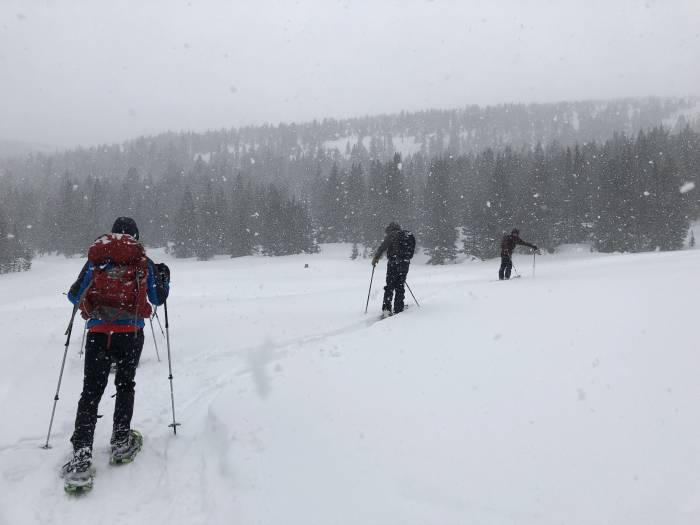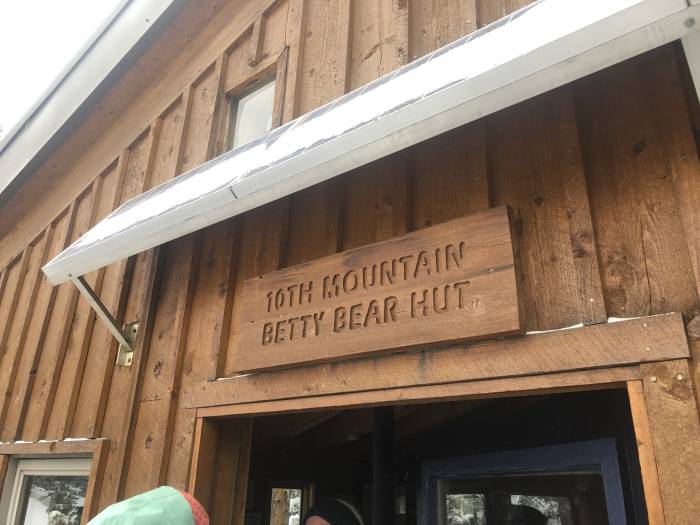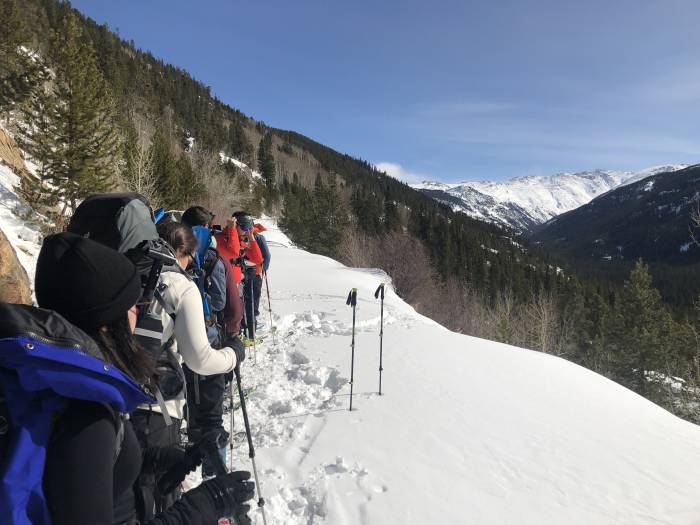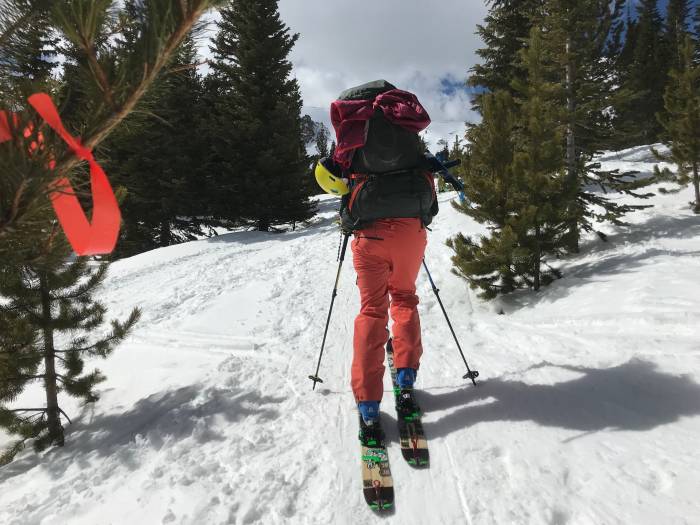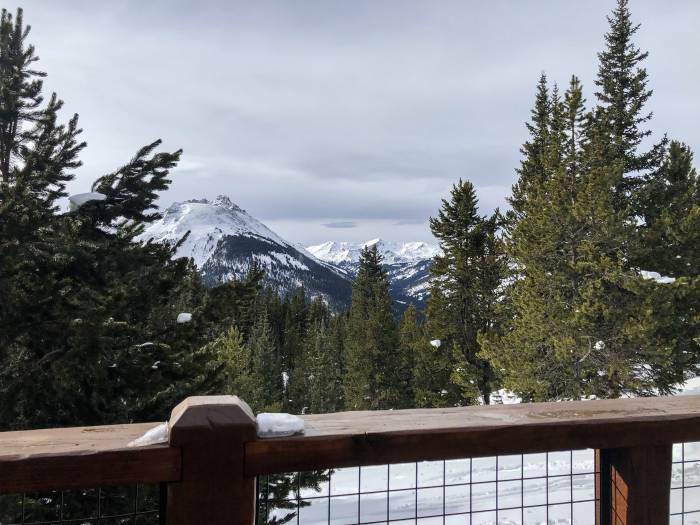Winter hut trips are idyllic, quiet, serene. Venturing deep into the mountains to stay in a no-frills hut is a really rewarding experience — for those bold enough to bite off the challenge of planning a hut trip.
Committing to a winter hut trip is the easy and fun part. The planning, coordinating, and inbound route will test your patience (with friends) and fitness.
You’ll look back on this moment of excitement fondly when you’re pulling your hair out because your friend thinks a case of beer is a “must-have” for her already overflowing backpack.
Picking Your Crew
Choosing the right mix of people to attend is the most important factor when deciding to do a hut trip. A chance to achieve solitude through a collective effort to navigate to a remote location, hut trips really can bring out the best — and worst — in your group. That friend that’s really fun but gets old after 4 hours? Do not invite them.
If most of your group has a go-with-the-flow mentality, you’re going to be great. If you look at your group and see a majority of people that could be described as “whiny,” “uptight,” or “high maintenance,” these people are not cut out for hut life, no matter how excited they are.
The first and most important step of planning a hut trip is picking a crew that will easily navigate all the challenges that come with a winter hut adventure.
The average 10th Mountain Division hut here in Colorado holds 16 people, but hut sizes range from eight to 20 people. This is pretty average for huts in other systems in the region.
Money Matters and Commitment
Two of the biggest issues you will run into as a trip organizer are getting everyone paid up and managing the roster for the big day. To solve the first issue, I highly recommend telling everyone that their spot isn’t guaranteed until they have paid their share of the fee.
Conversely, you could also collect from everyone before booking the hut. But with these huts going fast, I highly recommend you book and then collect. Given how popular these huts are, the stoke level is high right after booking, and 95% of your crew will pay you immediately.
Managing your roster as the trip gets closer brings on the biggest headache of all: the cancellations. Without fail, at least 25% of your crew will have to bail and want their spots filled.
I’ve found the easiest way to deal with this issue is that people’s spots are filled in the order in which they cancel, and if their spot is not filled, that’s on them. If you take responsibility for filling everyone’s spots, you’re never going to want to plan a hut trip again.
Getting spots filled is normally not an issue. Just make sure that whoever is coming understands what they’re getting into.
Evaluating Huts
If you’re like me, you drool at the idea of a far-off hut, with a long, inbound trek that sits atop a great ski slope or overlooks surrounding 14ers. But that’s definitely not everyone’s cup of tea and often involves more planning and coordination as the trip leader.
For your group’s first hut trip, I highly recommend a hut with a 2-hour commute (or less) to the trailhead and an inbound trek in the 3- to 5-mile range. If your group is made up of fitness badasses, throw out the inbound trek rule and get after it!

There are many hut systems, as well as standalone huts, throughout North America. Each has its own regulations (for example, some allow dogs whereas others don’t). They are also accessible in myriad ways, from ski tour to hike to, in some areas, snowmobile or even truck.
One popular example, the 10th Mountain Division hut system has several inbound trek routes that display both the distance and elevation gain. The only thing missing from the site is where that elevation gain comes in. If you’re worried about what the inbound trek may look like, my advice would be to Google the hut you’re going to in search of trip reports.
As with any winter excursion into the mountains, please make sure to evaluate for avalanche conditions as well. Everyone who doesn’t own one should rent a beacon, shovel, and probe if you’re traveling through avalanche terrain. You should also do a refresher course on the use of said items at the trailhead.
Packing List
As trip coordinator, this will be the least fun part of the trip: attempting to get 15 other people to adhere to strict packing guidelines so as not to cause a problem at the trailhead. (Good luck with that.)
What to Bring
The 10th Mountain Huts website has loads of info on what to bring on the FAQ page and is included with your confirmation email after registration. But every system is different, so make sure to read the fine print.
For example, toilet paper is provided. But I strongly recommend bringing extra — just in case and for the inbound trek. You don’t really need a water filter or tablets, as you can boil snow from around the hut. It’s worth noting that some huts may be near flowing streams.
If that’s the case, it’s often faster to filter water than boil it. Just do your homework ahead of time, as most huts will explain the best method for drinking water collection before your arrival.
If someone in your group has access to digital maps through a GPS device or a phone app, have them download maps for your area ahead of time. This can help in the event of a whiteout or group navigation confusion. For most huts, leave full-size pillows at home, but bring your own pillowcases.
What Not to Bring
The No. 1 question I get when planning a hut trip is about alcohol. Leave the beer at home. Bang for your buck doesn’t apply to hut trips. But bang for your pack weight is king. Hard liquor is your friend, followed by bagged wine (meaning boxed wine and leave the box at home).
If your body requires a beer after all outdoorsy activities, pack one for when you arrive at the hut. It will likely explode everywhere due to elevation gain and jostling around your pack. Be warned.
Ladies, shave weight and leave the makeup at home. Dudes, skip the shaving for a few days and leave the kit at home. You just need a toothbrush, toothpaste, deodorant, and, if applicable, contact case and solution.
Meal Planning
Planning your meals ahead of time will save you a ton of time and headaches. Our group puts a Google Sheet out that lists the meals per day (our group typically leaves lunch to the individual), dietary restrictions, and a spot for each person to contribute to at least one meal. Those individual meal providers get together to plan the meal, get all the groceries, and divide up the weight for pack efficiency.
I recommend pre-cooking anything complicated and putting it in a plastic bag. While I hate advocating for plastic, it shaves weight, doesn’t hold a preset form in your pack, and can be used for garbage collection at the hut.
Snowshoeing or Ski Touring? Plus Pack Advice

This one is largely up to each individual based on their preference, comfort, and whether the hut offers awesome backcountry skiing.
That said, if anyone is renting snowshoes or a pack for this excursion (each group typically has at least one renter), make sure they get fitted correctly for their pack and test the snowshoes out in the parking lot at the trailhead. It’s better to find out right away that one of your straps is broken.
For the inbound trek, put two of your strongest, most knowledgeable participants as the lead and tail guide.
Hut Enjoyment Tips
Activities
First and foremost: Get out and explore the beauty around the hut. Some of my favorite ski tour days are after arriving at the hut. It’s quiet, relaxing, and has seen very little impact from other people. If you want to just relax at the hut, definitely bring a book or an e-book, a deck of cards, or something to write in.
Sleeping Arrangements
Ninety percent of the huts involve the majority of your party sleeping in common areas. Make sure your party knows this ahead of time.
Some huts will have private rooms. While this sounds awesome, those rooms are typically closed off or away from the wood-burning heat source of your hut. So they are cold. Really cold.
A few people will snore. The entire place will smell like stinky stocks from the inbound trek. And altitude gives you gas — just roll with it.
Cleaning and Packing It Out
Every hut will stress this, but you need to pack out everything you bring in. Not only does this help to eliminate any pest problems at the hut, but it keeps the hut ready to go for the next inbound group. Don’t be the group that passes the buck.

